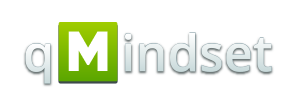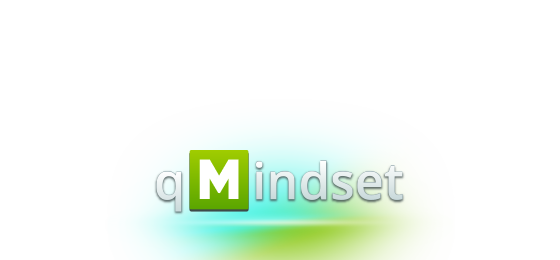| The detailed ISO 9001 Correlation matrix |
| ISO 9001:2015 (from September, 2015) |
ISO 9001:2008 |
| 1 Scope |
1 Scope 1.1 General |
| 4 Context of the organization |
4 Quality management system |
| 4.1 Understanding the organization and its context |
4 Quality management system 5.6 Management review |
| 4.2 Understanding the needs and expectations of interested parties |
4 Quality management system 5.6 Management review |
| 4.3 Determining the scope of the quality management system |
1.2 Application 4.2.2 Quality manual |
| 4.4 Quality management system and its processes |
4 Quality management system 4.1 General requirements |
| 5 Leadership |
5 Management responsibility |
| 5.1 Leadership and commitment |
5.1 Management commitment |
| 5.1.1 General |
5.1 Management commitment |
| 5.1.2 Customer focus |
5.2 Customer focus |
| 5.2 Policy |
5.3 Quality policy |
| 5.2.1 Establishing the Quality Policy |
5.3 Quality policy |
| 5.2.2 Communicating the Quality Policy |
5.3 Quality policy |
| 5.3 Organizational roles, responsibilities and authorities |
5.5.1 Responsibility and authority 5.5.2 Management representative 5.4.2 Quality management system planning |
| 6 Planning |
5.4.2 Quality management system planning |
| 6.1 Actions to address risks and opportunities |
5.4.2 Quality management system planning 8.5.3 Preventive action |
| 6.2 Quality objectives and planning to achieve them |
5.4.1 Quality objectives |
| 6.3 Planning of changes |
5.4.2 Quality management system planning |
| 7 Support |
6 Resource management |
| 7.1 Resources |
6 Resource management |
| 7.1.1 General |
6.1 Provision of resources |
| 7.1.2 People |
6.1 Provision of resources |
| 7.1.3 Infrastructure |
6.3 Infrastructure |
| 7.1.4 Environment for the operation of processes |
6.4 Work environment |
| 7.1.5 Monitoring and measuring resources |
7.6 Control of monitoring and measuring equipment |
| 7.1.5.1 General |
7.6 Control of monitoring and measuring equipment |
| 7.1.5.2 Measurement traceability |
7.6 Control of monitoring and measuring equipment |
| 7.1.6 Organizational knowledge |
No equivalent clause |
| 7.2 Competence |
6.2.1 General 6.2.2 Competence, training and awareness |
| 7.3 Awareness |
6.2.2 Competence, training and awareness |
| 7.4 Communication |
5.5.3 Internal communication |
| 7.5 Documented information |
4.2 Documentation requirements |
| 7.5.1 General |
4.2.1 General |
| 7.5.2 Creating and updating |
4.2.3 Control of documents 4.2.4 Control of records |
| 7.5.3 Control of documented Information |
4.2.3 Control of documents 4.2.4 Control of records |
| 8 Operation |
7 Product realization |
| 8.1 Operational planning and control |
7.1 Planning of product realization |
| 8.2 Requirements for products and services |
7.2 Customer-related processes |
| 8.2.1 Customer communication |
7.2.3 Customer communication |
| 8.2.2 Determination of requirements for products and services |
7.2.1 Determination of requirements related to the product |
| 8.2.3 Review of the requirements for products and services |
7.2.2 Review of requirements related to the product |
| 8.2.4 Changes to requirements for products and services |
7.2.2 Review of requirements related to the product |
| 8.3 Design and development of products and services |
7.3 Design and development |
| 8.3.1 General |
7.3.1 Design and development planning |
| 8.3.2 Design and development planning |
7.3.1 Design and development planning |
| 8.3.3 Design and development inputs |
7.3.2 Design and development inputs |
| 8.3.4 Design and development controls |
7.3.4 Design and development review 7.3.5 Design and development verification 7.3.6 Design and development validation |
| 8.3.5 Design and development outputs |
7.3.3 Design and development outputs |
| 8.3.6 Design and development changes |
7.3.7 Control of design and development changes |
| 8.4 Control of externally provided processes, products and services |
7.4.1 Purchasing process |
| 8.4.1 General |
4.1 General requirements 7.4.1 Purchasing process |
| 8.4.2 Type and extent of control |
7.4.1 Purchasing process 7.4.3 Verification of purchased product |
| 8.4.3 Information for external providers |
7.4.2 Purchasing information 7.4.3 Verification of purchased product |
| 8.5 Production and service provision |
7.5 Production and service provision |
| 8.5.1 Control of production and service provision |
7.5.1 Control of production and service provision 7.5.2 Validation of processes for production and service provision |
| 8.5.2 Identification and traceability |
7.5.3 Identification and traceability |
| 8.5.3 Property belonging to customers or external providers |
7.5.4 Customer property |
| 8.5.4 Preservation |
7.5.5 Preservation of product |
| 8.5.5 Post-delivery activities |
7.5.1 Control of production and service provision |
| 8.5.6 Control of changes |
7.3.7 Control of Design and Development Changes |
| 8.6 Release of products and services |
7.4.3 Verification of purchased product 8.2.4 Monitoring and measurement of product |
| 8.7 Control of nonconforming outputs |
8.3 Control of nonconforming product |
| 9 Performance evaluation |
8 Measurement, analysis and improvement |
| 9.1 Monitoring, measurement, analysis and evaluation |
8 Measurement, analysis and improvement |
| 9.1.1 General |
8.1 General 8.2.3 Monitoring and Measurement Processes |
| 9.1.2 Customer satisfaction |
8.2.1 Customer satisfaction |
| 9.1.3 Analysis and evaluation |
8.4 Analysis of data |
| 9.2 Internal audit |
8.2.2 Internal audit |
| 9.3 Management review |
5.6 Management review |
| 9.3.1 General |
5.6.1 General |
| 9.3.2 Management review input |
5.6.2 Review input |
| 9.3.3 Management review output |
5.6.3 Review output |
| 10 Improvement |
8.5 Improvement |
| 10.1 General |
8.5.1 Continual improvement |
| 10.2 Nonconformity and corrective action |
8.3 Control of nonconforming product 8.5.2 Corrective action |
| 10.3 Continual Improvement |
8.5.1 Continual improvement 8.5.3 Preventive action |




